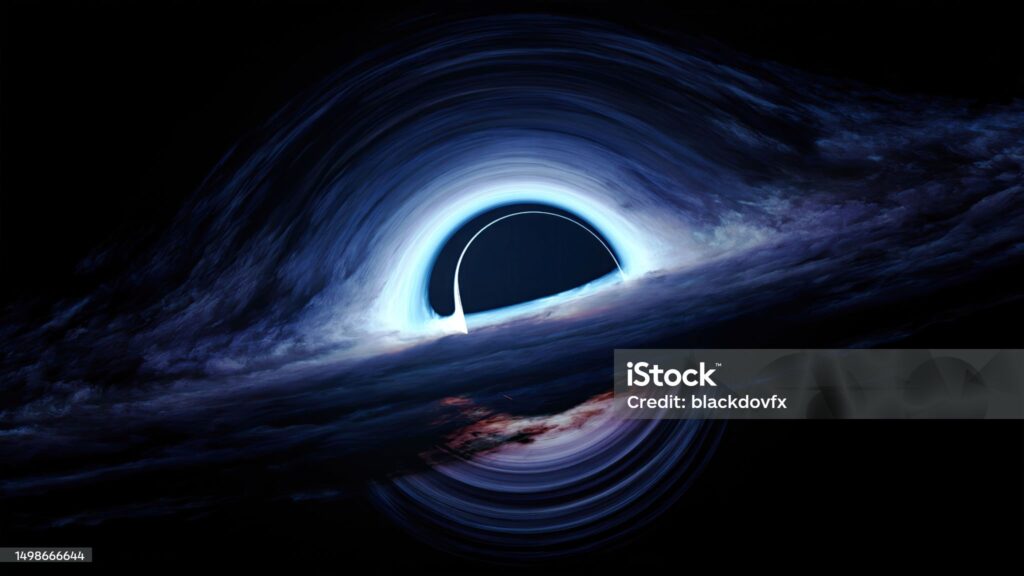Unlocking the Mysteries of Black Holes and White Holes: A Beginner’s Guide to Cosmic Gateways

Introduction: Journey into the Unknown
Imagine you’re gazing into the night sky, staring into the vast darkness, and you hear the term “black hole.” You might think of it as a giant vacuum in space, swallowing everything nearby. But what exactly is a black hole? Is there a reverse of it—something called a white hole? Let’s explore these mind-bending cosmic phenomena in simple terms.
What is a Black Hole?
A black hole is a region in space where gravity is so strong that nothing—not even light—can escape from it.
🔹 How Do Black Holes Form?
Black holes are typically formed when a massive star collapses under its own gravity after it runs out of fuel. This collapse squeezes the star’s mass into an incredibly small point known as a singularity.
📌 Key Point: A black hole’s gravity is strongest at its center (the singularity), and its outer boundary is called the event horizon—the point of no return.
🔹 Types of Black Holes:
- Stellar Black Holes – Formed from collapsing stars.
- Supermassive Black Holes – Found at the center of galaxies (like the Milky Way).
- Intermediate Black Holes – Still a mystery; in between stellar and supermassive.
- Primordial Black Holes – Hypothetical; formed during the early universe.
🔹 Key Characteristics:
- Invisible (only detected by how they affect nearby objects)
- Immense gravity
- Time dilation occurs (time slows down near them)
- Can emit X-rays when feeding on nearby matter (accretion disk)
What is a White Hole?
A white hole is a theoretical opposite of a black hole. If black holes pull things in, white holes expel matter and light, but nothing can enter them.
🔹 Where Did the Idea Come From?
White holes are solutions to the equations of general relativity—Einstein’s equations that describe gravity. While they haven’t been observed, they appear as a possible mathematical concept.
📌 Key Point: A white hole cannot be entered from the outside, but matter and light can escape from it—making it a hypothetical “exit” point in spacetime.
🔹 Could White Holes Be Real?
- So far, no observational evidence.
- Some theories link them to wormholes (tunnels through space-time).
- Some scientists speculate that a white hole could be what lies on the other side of a black hole in a different universe.

Black Hole vs. White Hole: A Comparison
| Feature | Black Hole | White Hole |
|---|---|---|
| Gravity | Pulls everything in | Pushes everything out |
| Observed? | Yes | No (theoretical) |
| Escape Possible? | No | Cannot enter |
| Time Flow | Slows near event horizon | Hypothetical behavior |
Interesting Related Topics for Beginners
🔹 Wormholes
- Theoretical bridges between black and white holes.
- Could connect distant parts of the universe or different universes.
- Still only a theoretical concept, not proven.
🔹 Hawking Radiation
- Proposed by physicist Stephen Hawking.
- Suggests that black holes can slowly evaporate over time by emitting radiation.
🔹 Event Horizon Telescope (EHT)
- A global network of telescopes that captured the first-ever image of a black hole in 2019.
- Provided proof of the black hole in the galaxy M87.
Why Should We Care About These Cosmic Giants?
Understanding black holes helps us explore:
- The origin of galaxies
- How gravity works at extreme levels
- The fate of stars
- The nature of time and space
While white holes remain speculative, they push the boundaries of our imagination and science, opening doors to questions about parallel universes, time travel, and the fundamental laws of physics.
Final Thoughts: The Great Cosmic Mystery
Black holes are no longer just science fiction—they’re part of our known universe. White holes, though still a mystery, invite us to question the universe in deeper ways. Whether you’re a student, space lover, or curious mind, understanding these cosmic phenomena is a step into the future of space science.
📌 Explore the skies, ask big questions, and stay curious—because the universe is far more mysterious than we ever imagined.


If you’re looking for a place to play, then adsbet88 isn’t a bad place to start! I don’t have any problems with adsbet88, so, in my book, the site is a good site! adsbet88!
Fabetvina…hmm, the vina part makes me suspect it might be mainly for Vietnamese? Well, worth a try. I’ll see if they have games for people in other parts of the world. fabetvina.
Sv66apps download complete! Easy peasy lemon squeezy. This app is smooth as butter. The experience is great and there are a lot of options! Try it out –> sv66apps
Just a heads up, if you’re looking to get into id888casino, id888login is where you go to login. Makes things easy, really. You can find them here: id888login